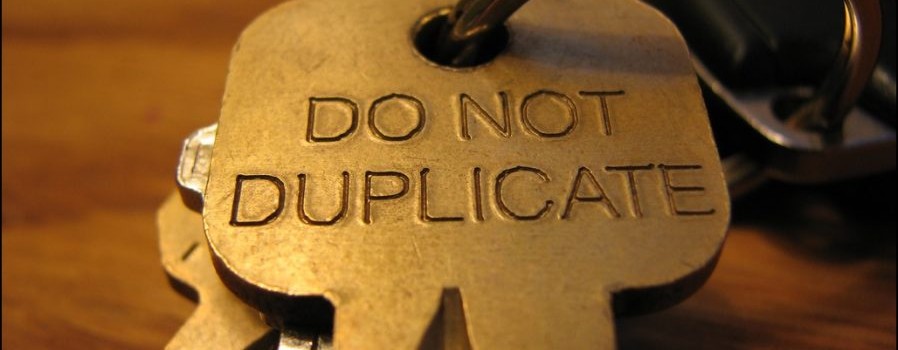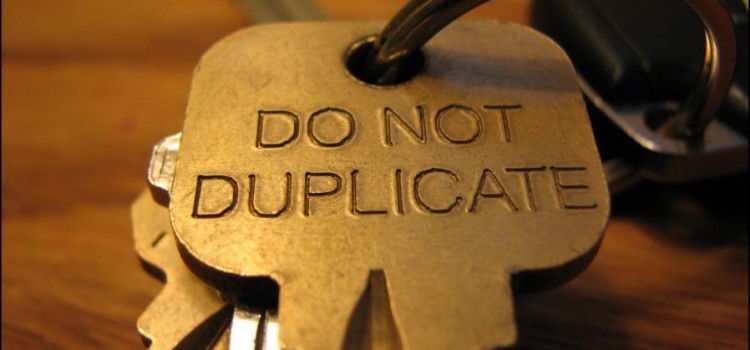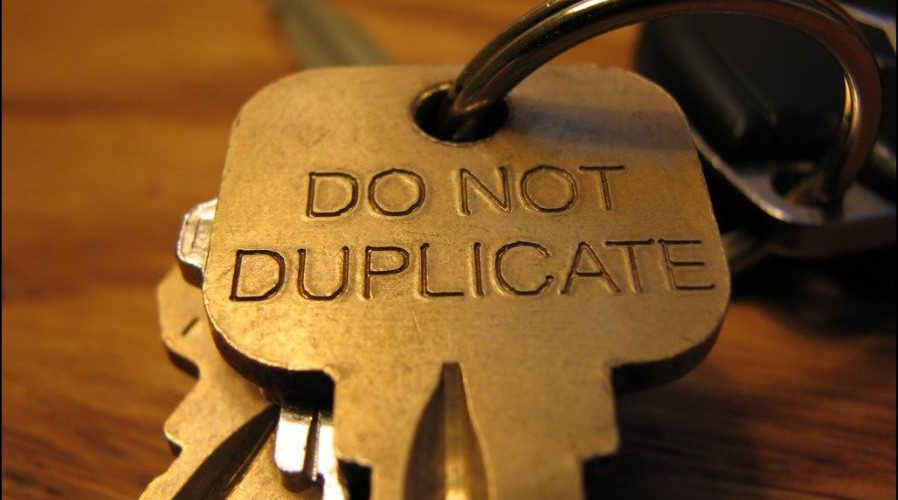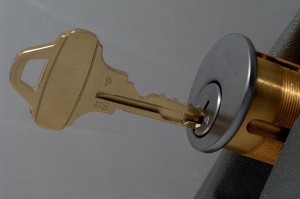

How to Make a Duplicate Key
Key Copy December 5, 2015 Editorial Staff 0

Even without going to the locksmith, you can on your own make a working copy of a key, even one with a “Do Not Duplicate” warning inscribed.
All you need is a few seconds of access to that key and some basic tools and materials that are already readily available in your home.
Once you get access to the key, take a photo of it with your smartphone, or make an impression of it using plaster compound or molding clay. If you’ve taken a photo, make sure it’s done exact to the scale of the original key. If you’ve made a mold, take a photo of the key impression.
Whichever method you used – whether a direct photo of the original key or a photo of an impression of it on a piece of clay, make two printed copies of the picture. Cut out one copy and paste it on a strip of thin metal – tin or aluminum will do. A used soft drink or beer can will do just fine for this purpose.
With a sharp scissor, cut out the metal strip with the pasted-on photo of the key to be copied. Leave some excess metal around the teeth area for allowance later. Now, get any spare key you may have that more or less approximates the size of the key you want to copy.
Use the grooves of that spare key to work out the finer details of the key to be copied. Line up the cut-out duplicate key with the spare key in each area where a groove is needed and with a ruler or paper wight, press down hard.
Press until you force a groove into the strip of metal. Once you’ve got the grooves done right, cut out your other printed photo of the original key and use it to shape the duplicate to perfection.
 The next step is to try out your duplicate key. Check if it fits the lock. Even if it fits but if you think that the tin or aluminum metal that you used may be too soft to be able to actually turn the lock, you can reinforce and prop it up a bit with an improvised tension wrench.
The next step is to try out your duplicate key. Check if it fits the lock. Even if it fits but if you think that the tin or aluminum metal that you used may be too soft to be able to actually turn the lock, you can reinforce and prop it up a bit with an improvised tension wrench.
Take one using ordinary paperclip. Bend the paperclip into an ‘L’ shape and use it to help along your duplicate key to get the lock to click open. Of course, they’ll likely not work after just one try. Practice until you get the hang of it.
Alternatively, if you’ve taken a clay or plaster compound impression of the original key, you can use that to make a mold cast which you can in turn use to create a duplicate.
Lubricate your mold cast and pour some epoxy solution or some metal with a low melting point like the zinc in your pennies. Bake for a while under a sun lamp until it dries up and hardens. Pry the duplicate key out of the mold with a knife or small screwdriver.
File the epoxy or metal duplicate until perfected. Again, this won’t likely work after just one try so it’s best to be prepared to try and try again until you get the hang of it. All successful spies and burglars do put in the practice time needed until they’ve mastered their craft.
If all else fails, just take your key to Ace Hardware and get a copy! If you don’t have the original key to begin with (whether it’s lost or misplaced), call a locksmith.

No comments so far.
Be first to leave comment below.